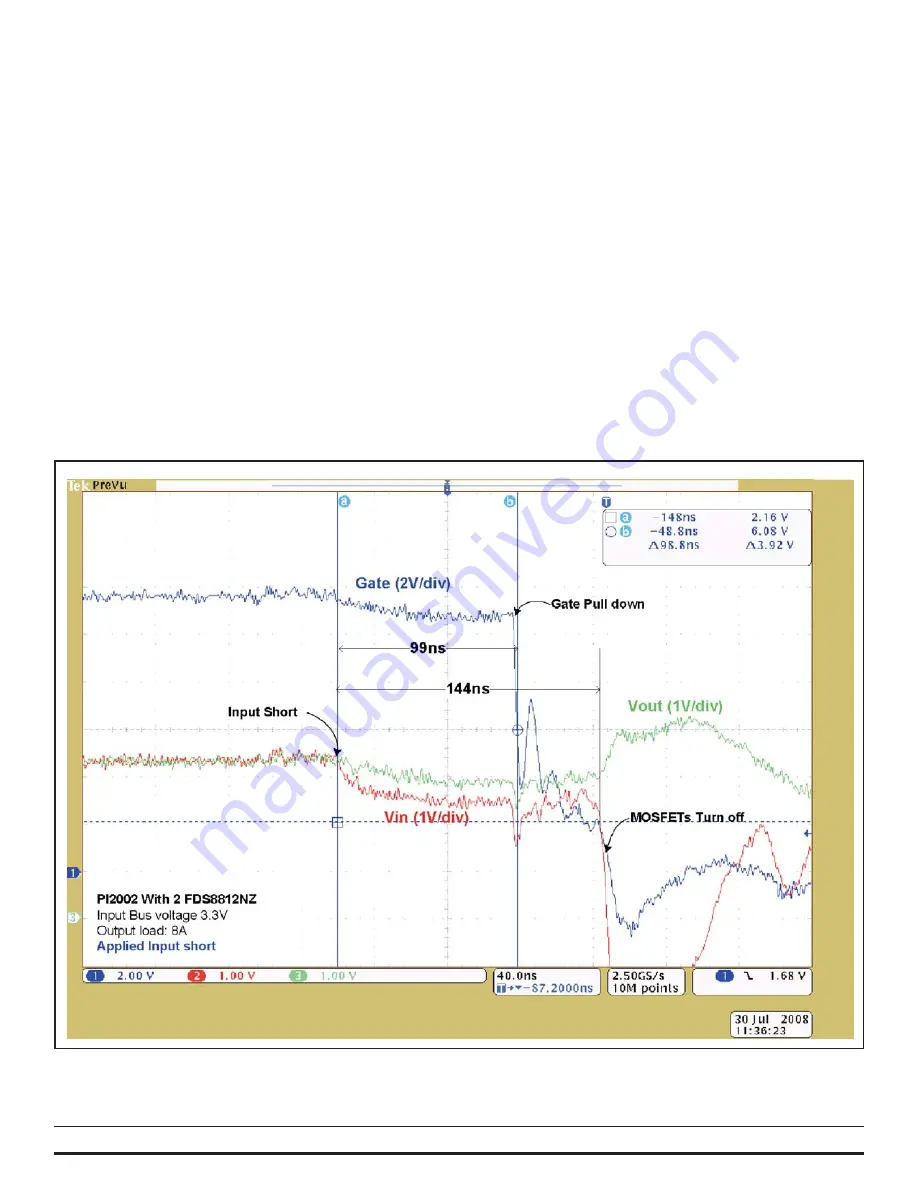
Picor Corporation • www.picorpower.com
PI2002-EVAL1 User Guide Rev 1.0
Page 9 of 11
8.0 Input short circuit test
8.1
To emulate a real application, the BUS supplies for this
test should have a solid output source such as DC-DC
converter that supplies high current and can be
connected very close to the evaluation board to
reduce stray parasitic inductance. Or use the
prospective supply sources of the end application
where the PI2002 will be used.
8.2
Stray parasitic inductance in the circuit can contribute
to significant voltage transient conditions, particularly
when the MOSFETs are turned-off after a reverse
current fault has been detected. When a short is
applied at the output of the input power sources and
the evaluation board input (Vin), a large reverse
current is sourced from the evaluation board output
through the ORing MOSFETs. The reverse current in
the MOSFET may reach over 60 A in some conditions
before the MOSFETs are turned off. Such high current
conditions will store high energy even in a small
parasitic element, and can be represented as ½ Li2. A
1 nH parasitic inductance with 60 A reverse current
will generate 1.8 µJ. When the MOSFETs are turned
off, the stored energy will be released and will
produce a high negative voltage at D1 and high
positive voltage at D2. This event will create a high
voltage difference across the MOSFETs.
8.3
Apply a short at one of the inputs (Vin1 or Vin2).
The short can be applied electronically using a
MOSFET connected between Vin and Gnd or simply by
connecting Vin to Gnd. Then measure the response
time between when the short is applied and the
MOSFETs are disconnected (or turned off). An example
for PI2002 response time to an input short circuit is
shown in Figure 7.
Figure 7
– Plot of PI2002 response time to reverse current detection




























